Ludic Hardware Experiments
As a researcher at the University of Applied Arts Vienna, I have dedicated my efforts to the ongoing development of specialized controllers and sensors. These prototypes possess the capability to efficiently collect and relay data while seamlessly interfacing with a diverse range of other technologies. These encompass web-based applications, immersive game engines, and an array of other digital platforms.
More than 10 controllers have been produced utilizing tailor-made PCBs. Initially, we prototyped the boards and tested them extensively. Subsequently, I utilized Fritzing to design the PCBs, ensuring their aesthetic appeal aligns with the intention of showcasing them as artifacts during exhibitions. Following this, all the components were soldered onto the boards, and these finished products were not only presented to students but also actively featured in various exhibitions.
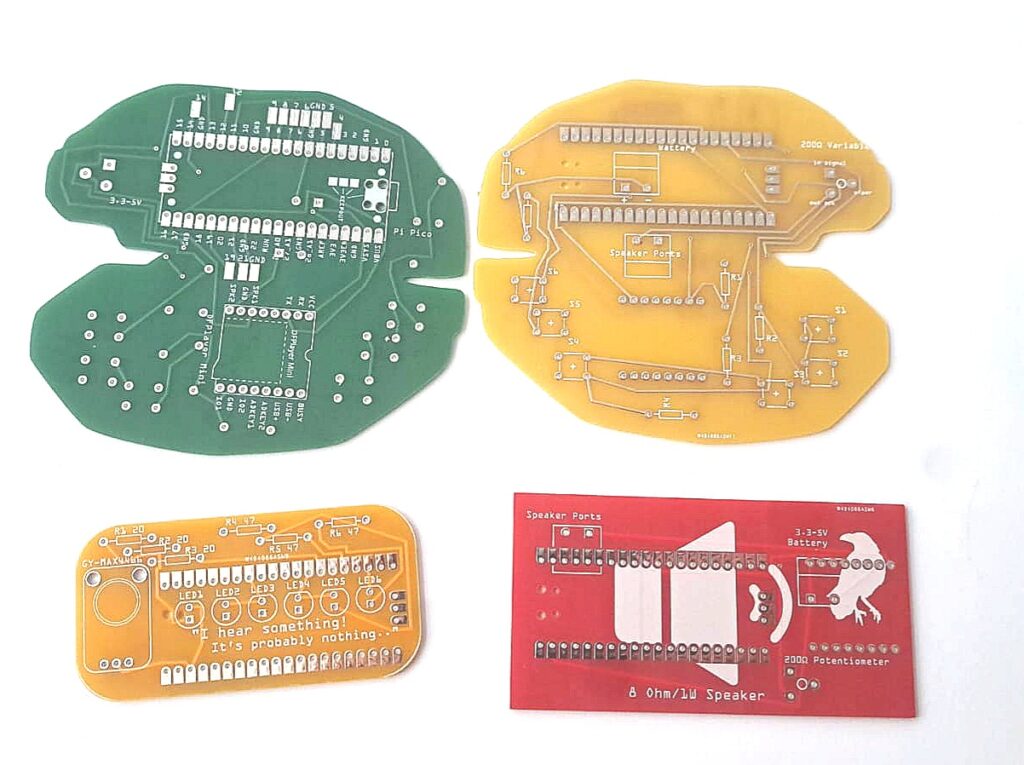
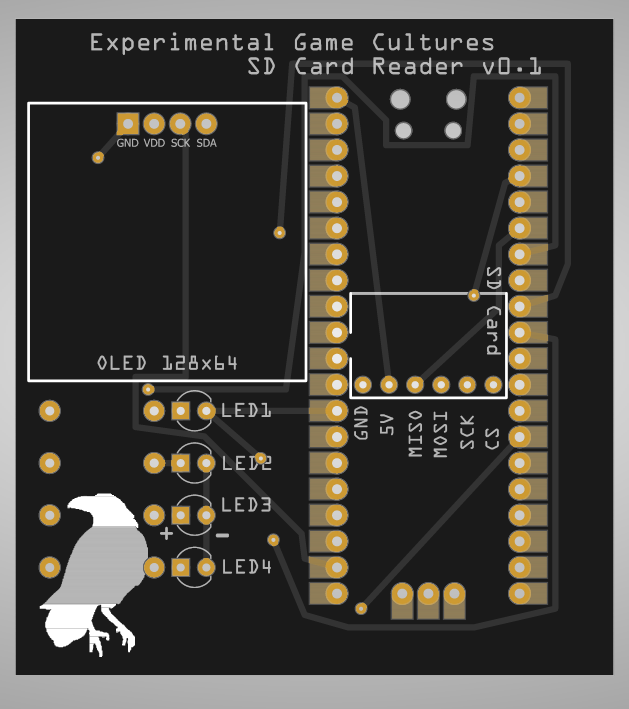
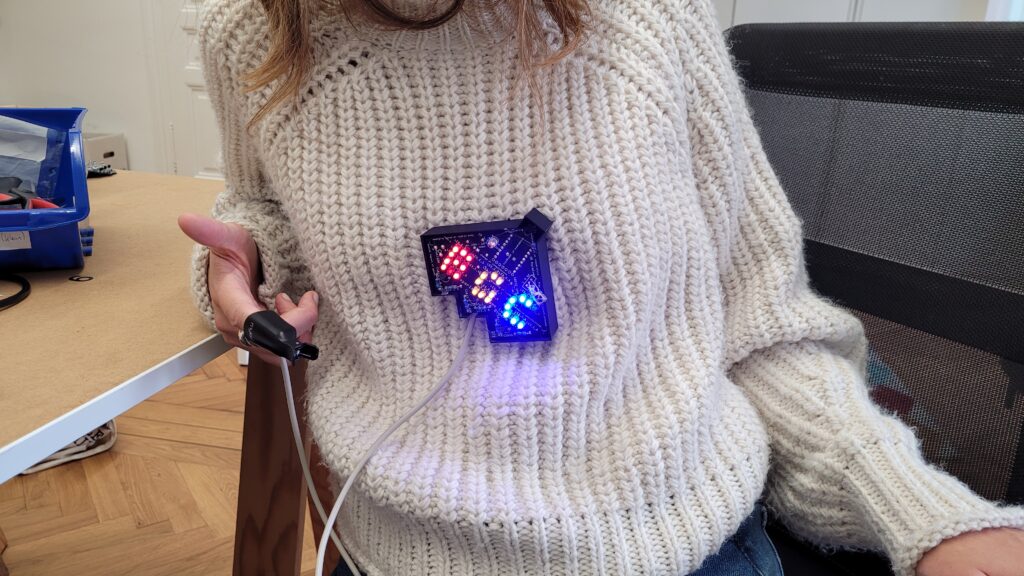
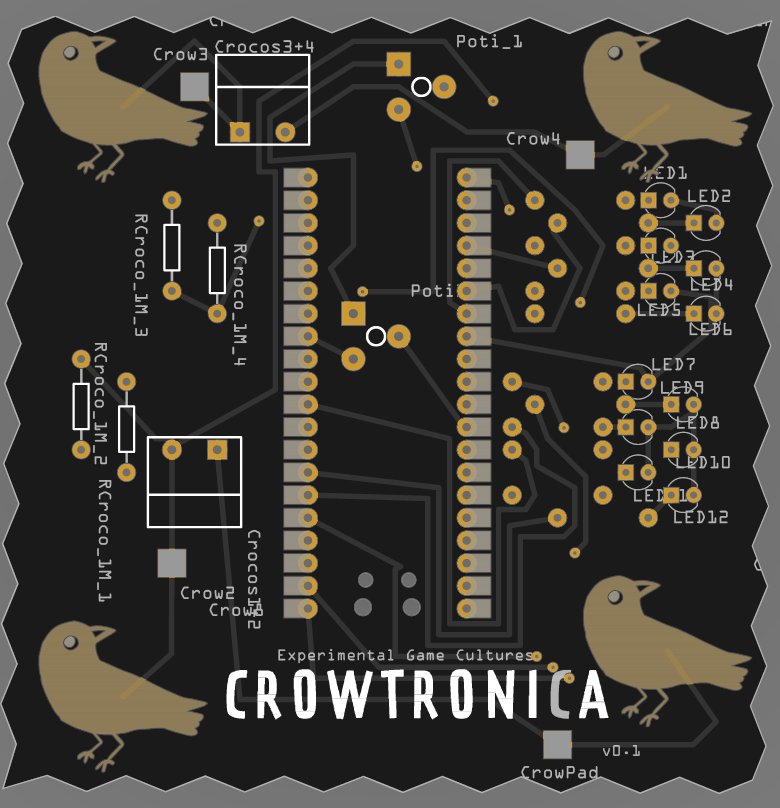
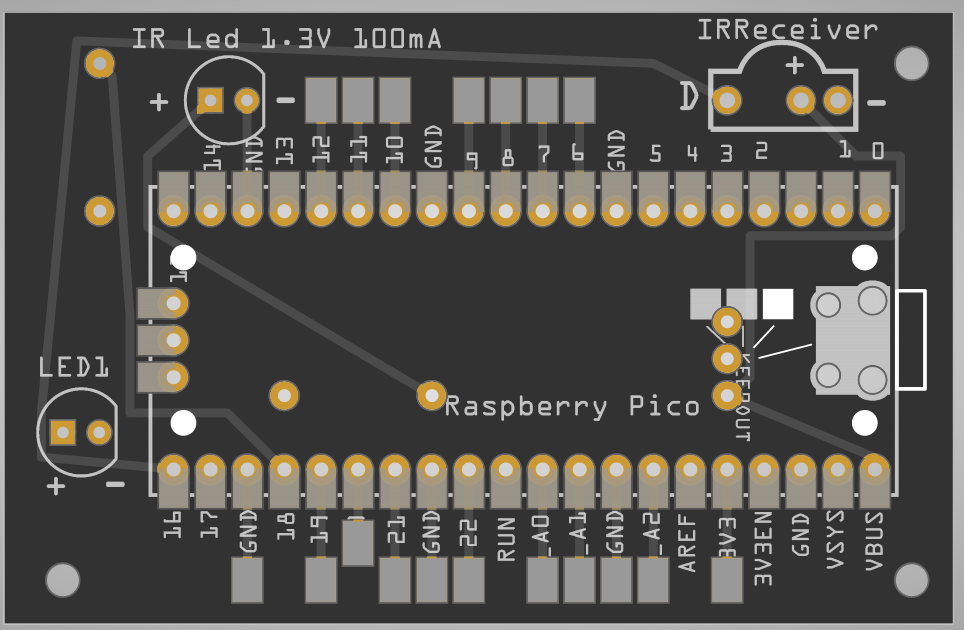
Ludic Hardware Experiments
AI systems (Artificial Intelligent System – i.e. computer programs with artificial intelligence) free us from choice. Both from the “agony of choice” between contents and from democratic political choice. How do we deal with such systems? How do we stop being benevolently liberated?
We enter a spatialized labyrinth. We know a mirror cabinet from the Prater in Vienna since childhood. Today we know Face Recognition from everyday life, when opening the smartphone and the banking app. When we apply for a loan, our creditworthiness is checked by AI Statemachines.
Neuromatic Game Art – 2023
In this project I was responsible for the development of a web-technology based face recognition system, that interfaces between 7 Linux based computers as well as 2 Raspberry Pi Pico based sensors. Technologies used were Javascript (Node.js, Faceapi.js) and Python (Raspberry).
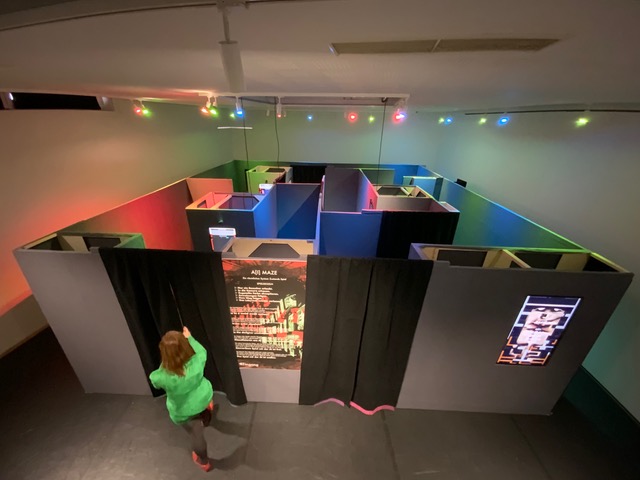

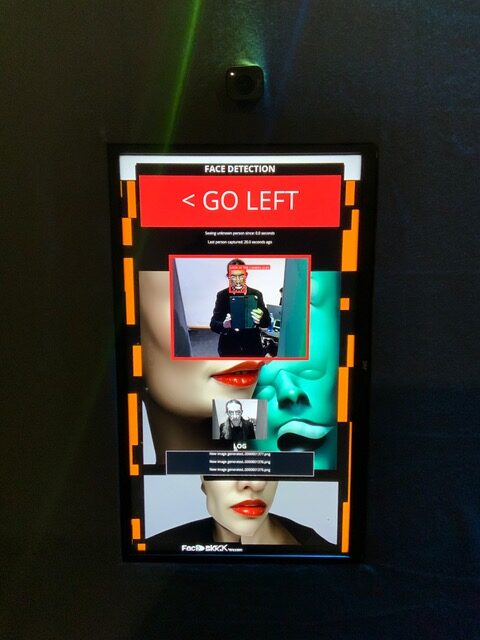
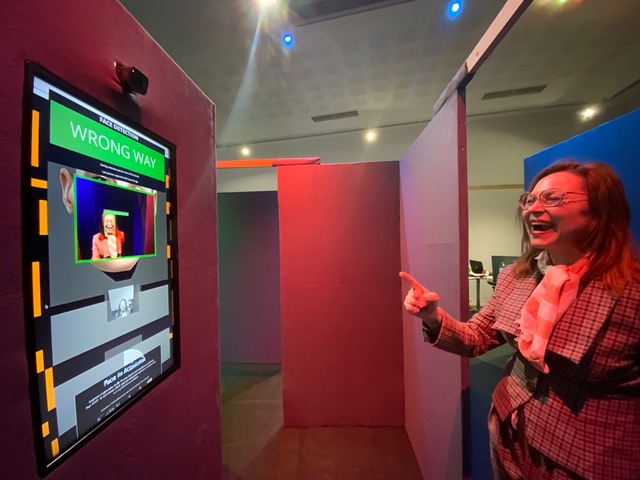
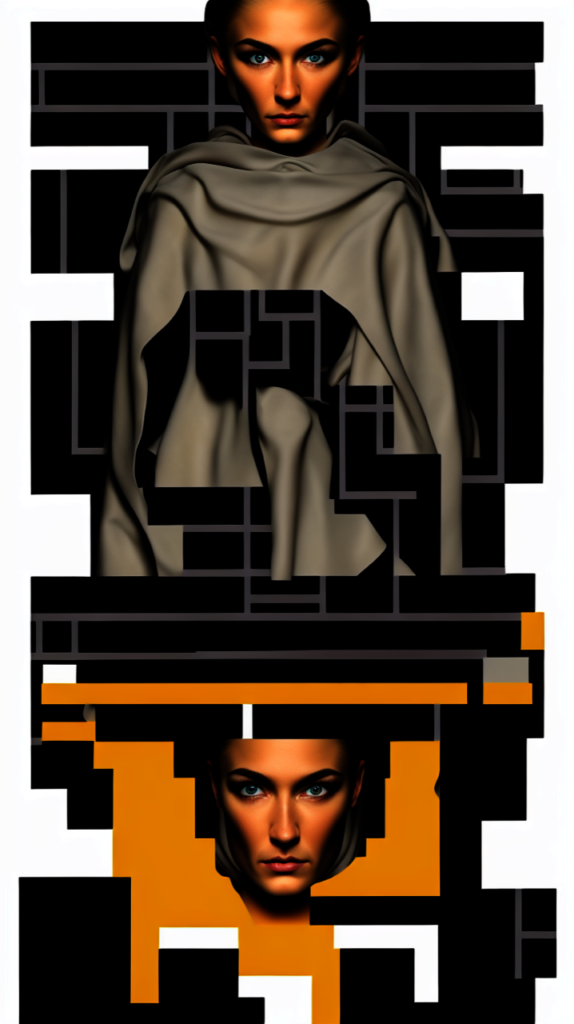

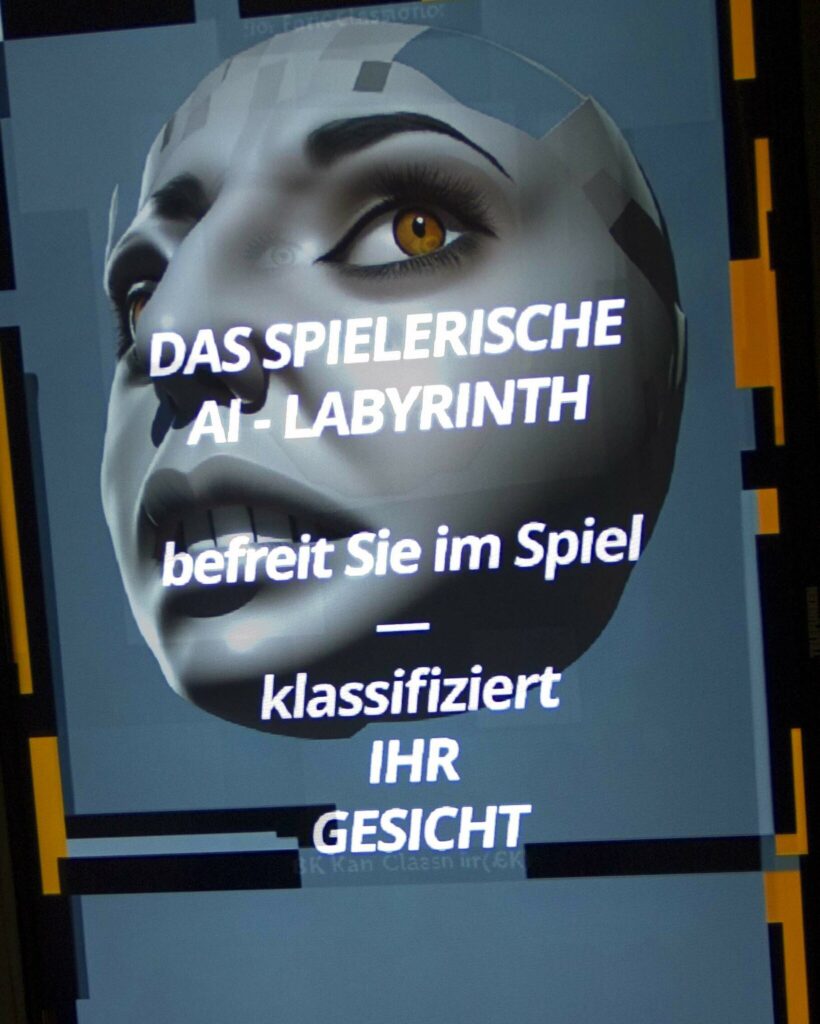
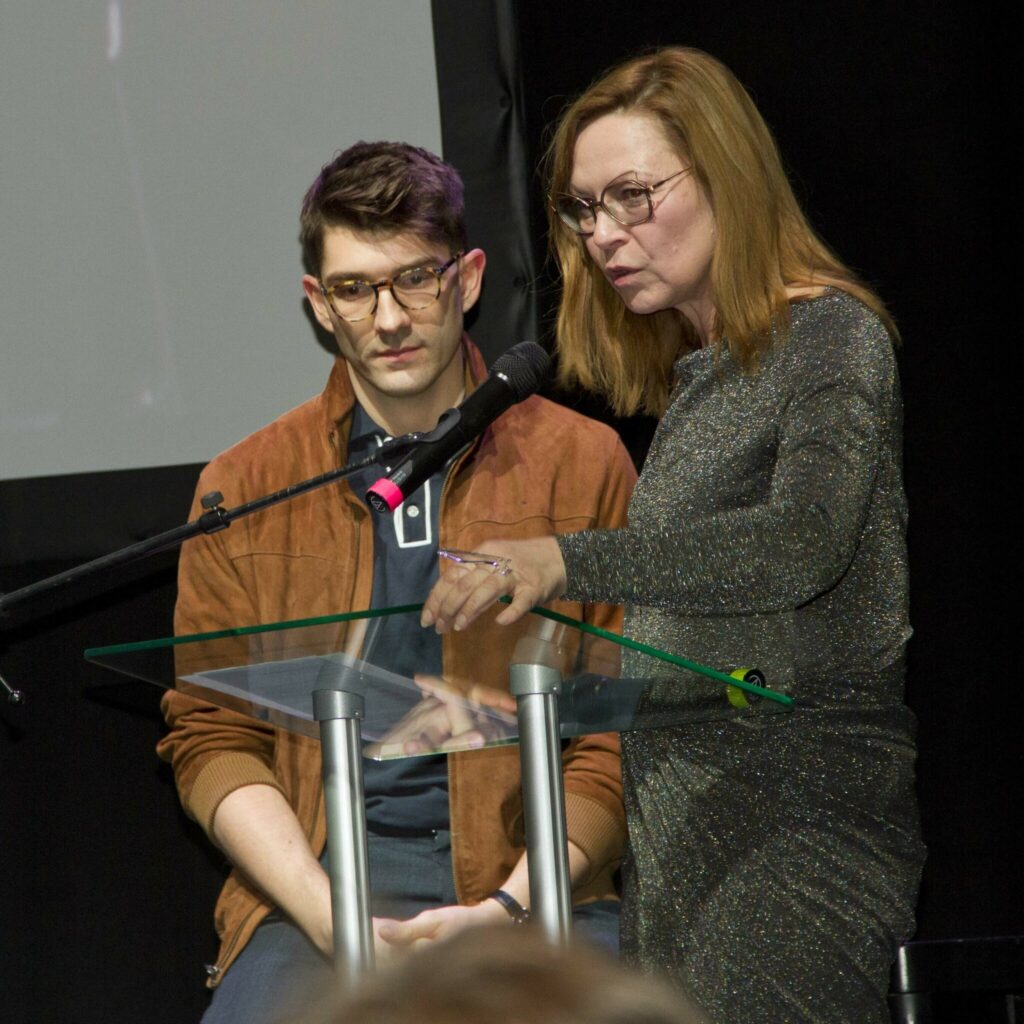
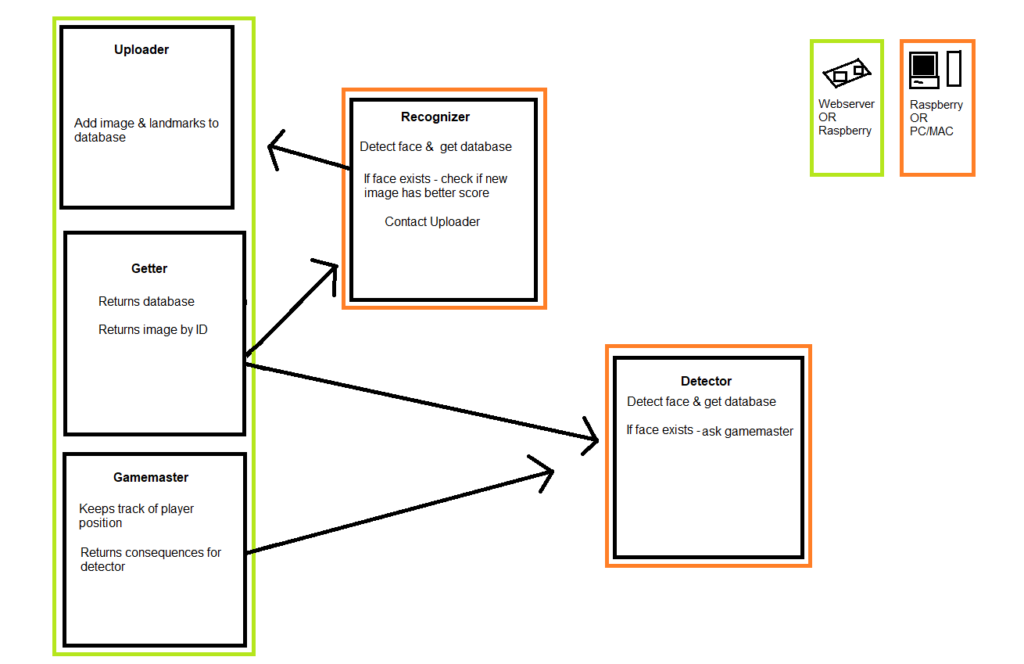
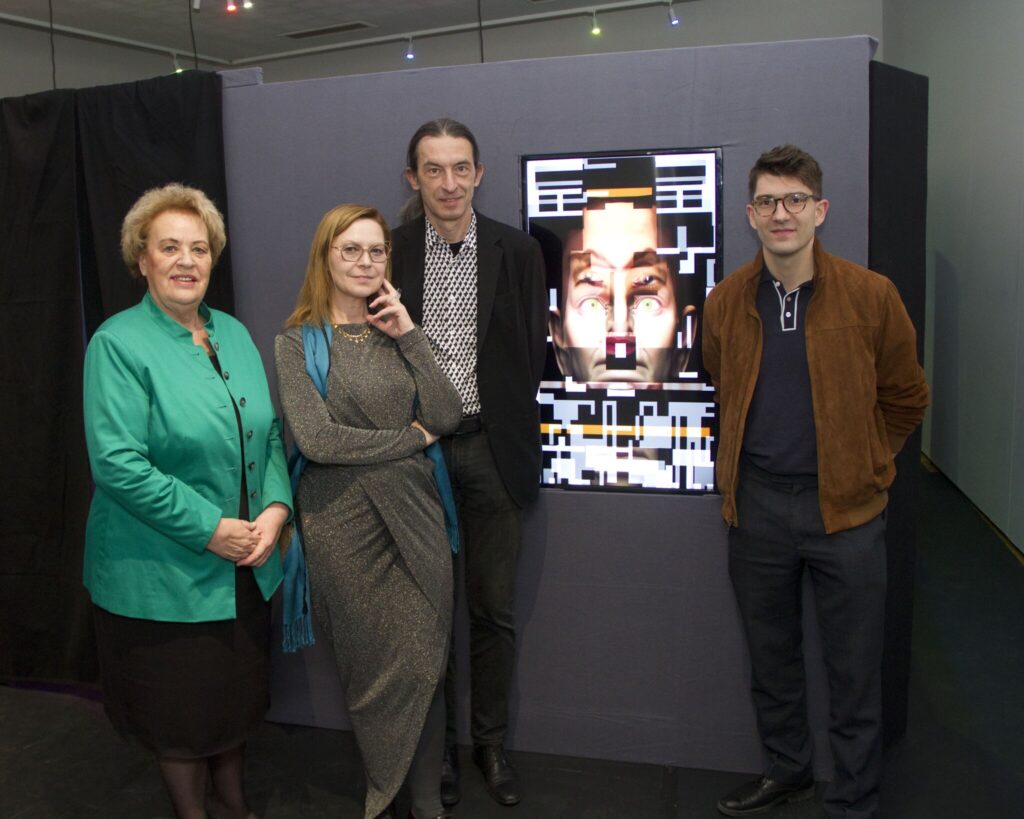
https://www.oho.at/programm/ai-labyrinth
[A]I Maze
In a performative game with anti-game mechanics, we demonstrate appropriation, appropriation as one inherent in subversive play with technologies. Form of art. The former Postsparkasse ticket hall becomes Shannon’s labyrinth.
In the situational game with dynamic AI mechanics, we and you enjoy between Board game and artistically situated play distributed in the room: the transparency of the glass house, drones, white rabbits, the interlude in year one Experimental Game Cultures: the one way out/out of the labyrinth of the Savings Bank – in which it is blurred whether we play seriously, train AI or the game plays us…
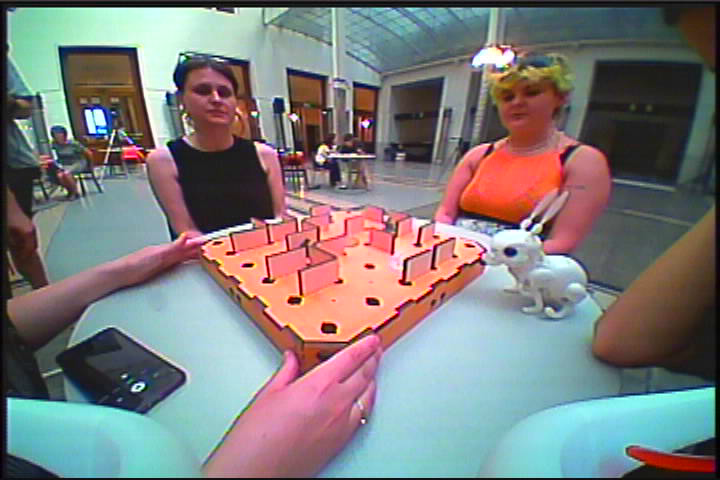
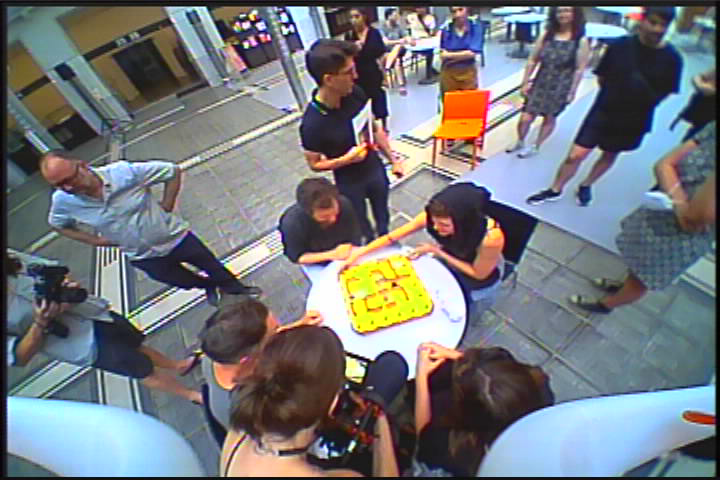
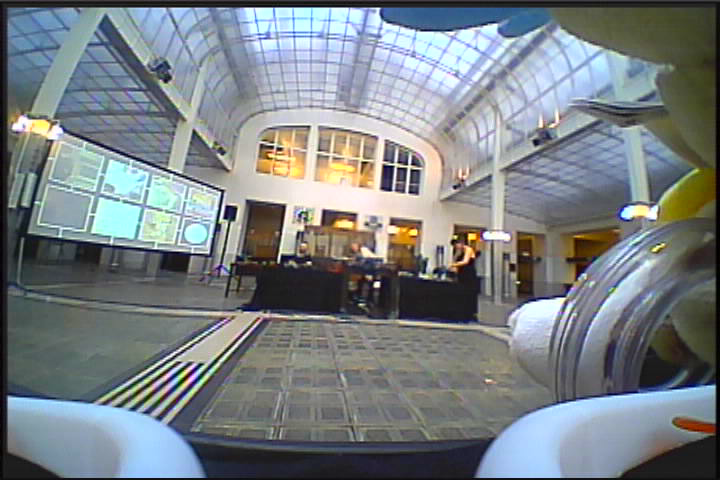
Drones & Rabbits in Shannons Labyrinth
In this situated game, a „Neuromatic mindobject“ is presented – a non-human actor that draws human input data. 300.000 data points are used to generate a continiously evolving, organic structure via code. The data is from the “player”, him/her/they, recorded with one of our latest mind reading devices – a professional 32-channel EEG as a part of the research project Neuromatic Game Art.
In this project I was responsible for building a web-based 3D experience that takes in pre-recorded brainwave-data to animate 2 “mindworms” that eat away at a building over time. It is currently exhibited in the “Artificial Museum” and accessible via Augmented Reality/Web Browsers.

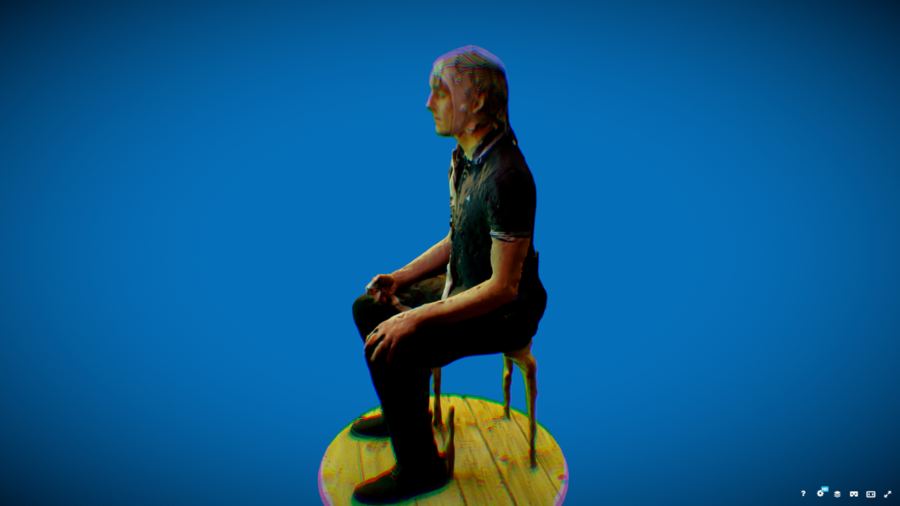
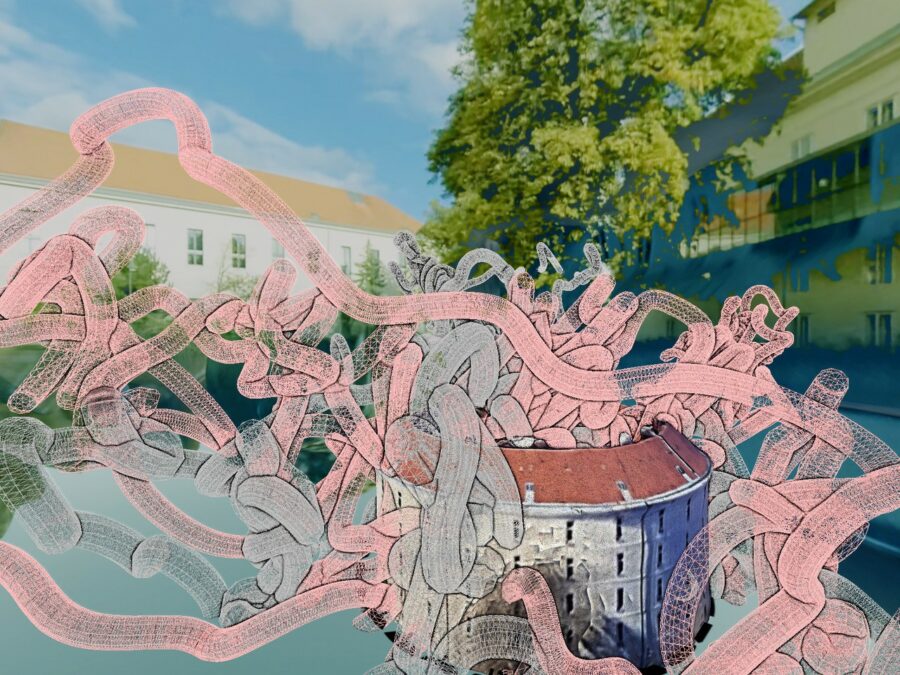
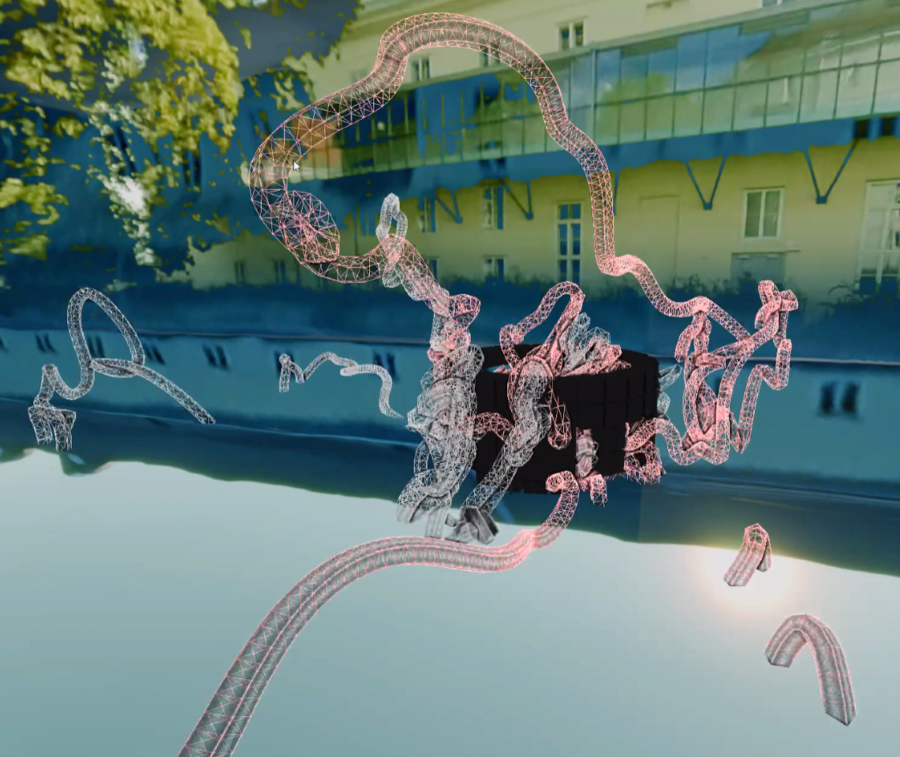
“Narrenturm” Mindgame: Mindworm Blaster
In a performative card game, we orientate ourselves on a reinterpretation of Dérive and Detournement as a mind game. AI ethics, generative text and performance are grotesquely coupled with an interpassive mind reading device. Using GPT-2 as a poetry game.
We invite you to indulge yourself: the staged generation of artistic research texts, the oracle of neuro interfaces and somatic experience. We play sensory expansion and introspection in the fog of time.
In this project I was responsible for the fine-tuning of a locally hosted GPT-2 model that was trained on data from our artistic manifesto. During the performance, I was editing the lines that were read by the artist and responding to the questions of the second player.
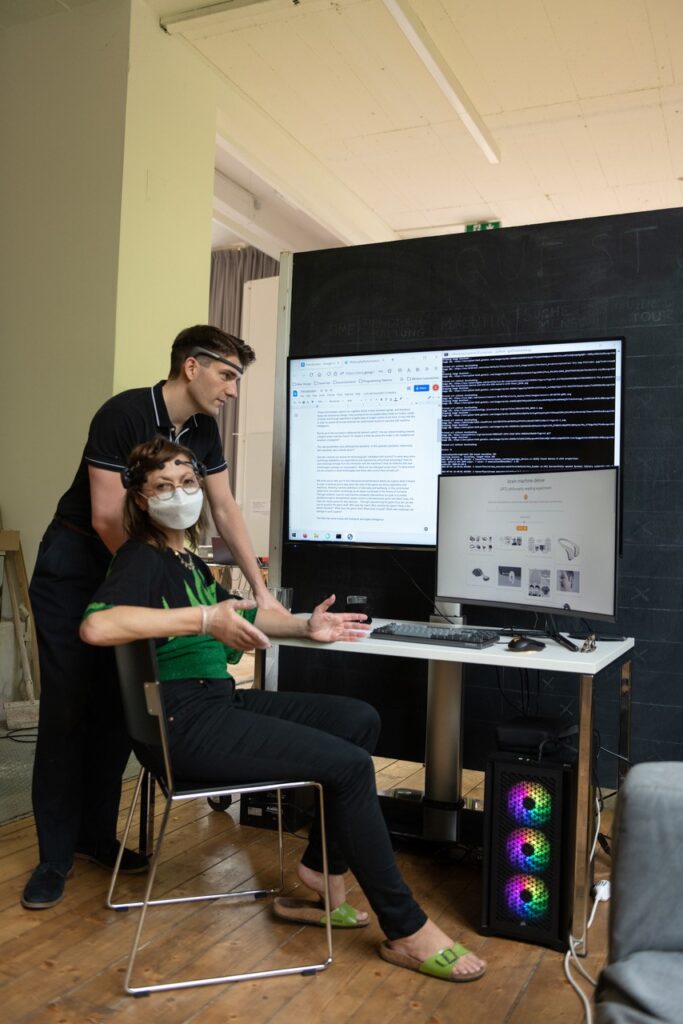
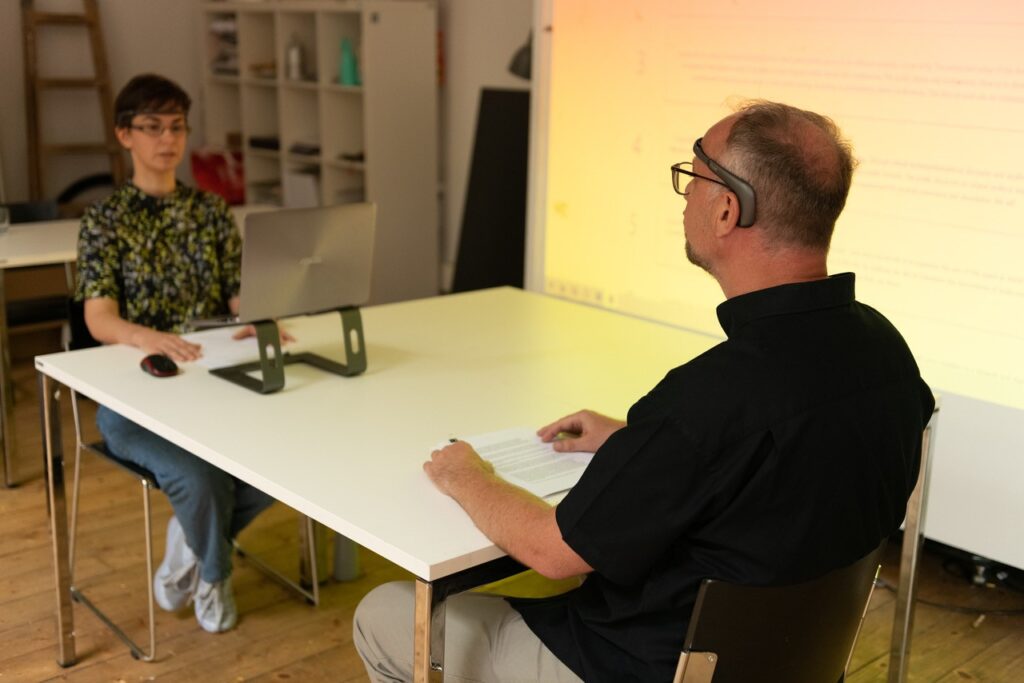
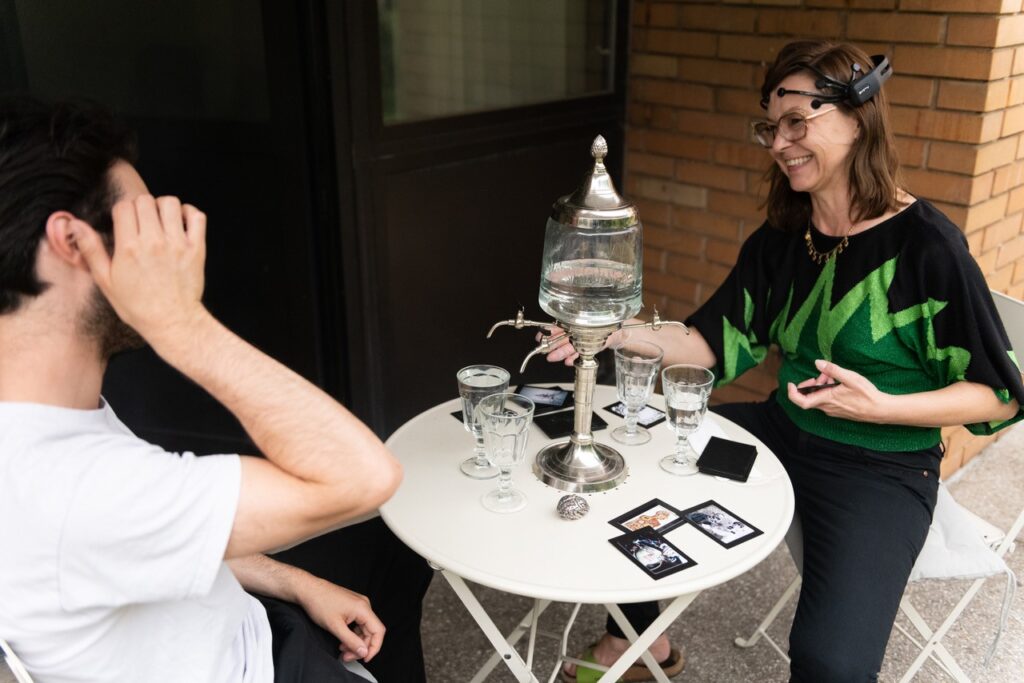
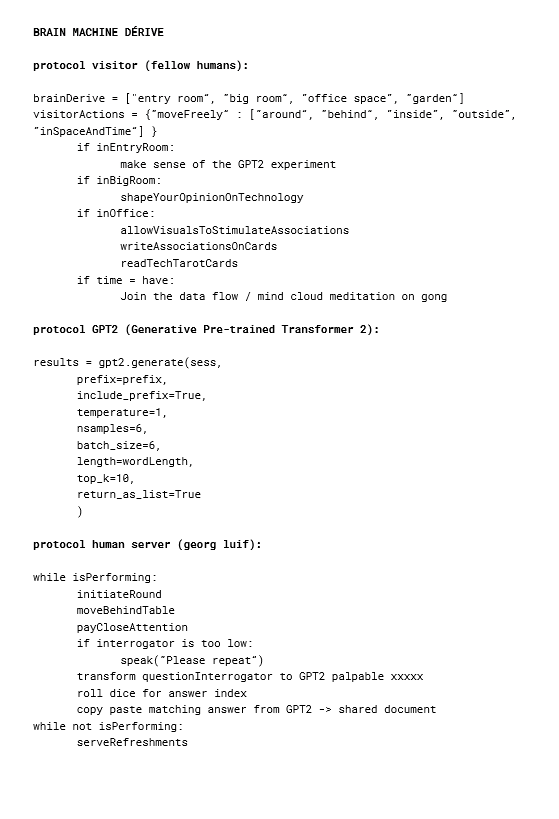
Dérive performance – Critical Philosophy Play
Grounded Birds is a multiplayer RPG about the tragic fate of birds – being robbed of their ability to fly, they become easy prey for other inhabitants of their world.
You join a group of brave hatchlings, as you will take a last stand to save the birds from becoming extinct.
Set in a quirky and playful world, with darker influences from games like Diablo 2.

Move, hop and explore – With your ability to fly taken from you, the main way of getting around is running and hopping on objects in the world. But be wary, as predators are around every corner!
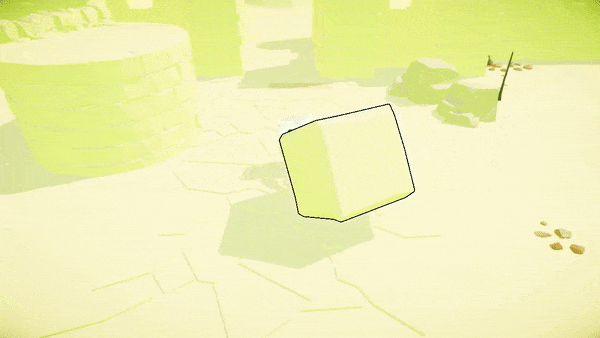
Collect a wide variety of gear and fight – Arm yourself with lots of different gear and protect your feathers from hungry enemies. Magical items grant you special abilities that you can cast!

Level up your character – choose your path and skill up your strength, speed, luck and more. These choices combined with the items you prefer will make you a unique member of your team.
Grounded Birds

A Leap Forward is a Realtime Strategy game that you play from a First Person perspective. You give tasks, such as “collect wood” to your exceptionally smart rabbits and they figure out the most efficient way to fulfill it. As a player you can help out directly, or provide them with tools and buildings that increase productivity.
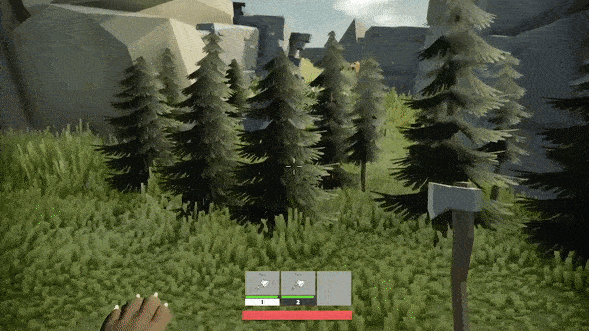
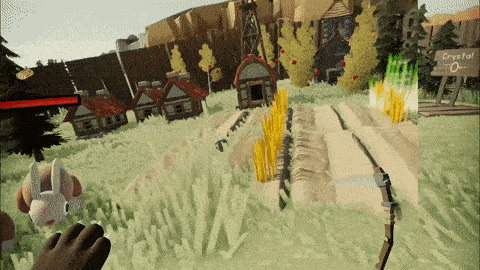
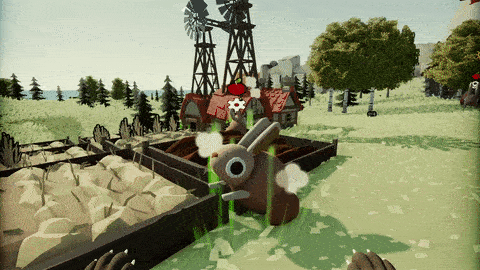

As an example, rabbits start by collecting branches from the ground, but by giving them an axe, they will chop down nearby trees instead. By building a sawmill, and providing them with axes, they will automatically chop trees down and refine them at the sawmill, which improves productivity even more.
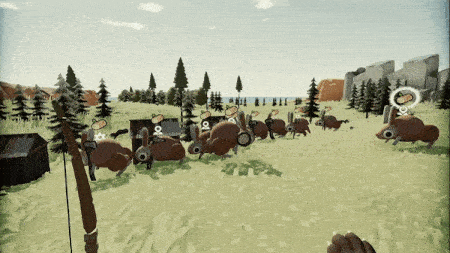

While you manage your village, hostile foxes will attempt to capture and destroy it and eat the population. You are on the ground with your troops and can interact with them directly or through bulk orders. The goal is to survive several enemy waves and amass as much gold as possible, that can be used to purchase new building blueprints, tools or weapons.
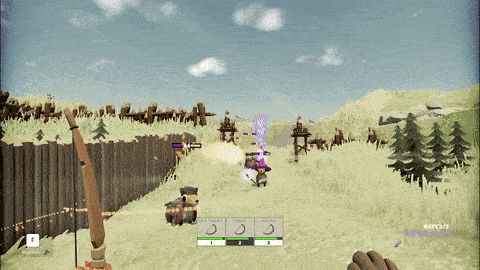
Get the demo now on GameJolt!

A Leap Forward
Ruben’s Puppets combines Real Time Strategy elements with Third Person Action gameplay.
Players can traverse, interact and gather within a large scale conflict that is played out by two opposing puppet factions.
Your goal is to fend off the Tin puppets and free the creator of the puppet world who is being held hostage.
- Support or manipulate puppet economies.
- Use your bow and arrow to fight hostile puppets.
- Outsmart the enemy general!
Thesis Committee: Richard Lemarchand, Karen McMullan, Carl Schnurr
Download the free demo now!
Ruben’s Puppets
A Goldrush themed local multiplayer brawler for PC and Mac. Created in collboration with John Billingsley
Play as two competing prospectors trying to fill your safes with precious gold nuggets or other items of value.
Whether it’s in the dusty hills of the Sierra Nevada, the icy peaks of the Klondike, or the burning heat of the desert, it’s your chance to strike it rich!
But beware, competing prospectors abound!
Armed with dynamite and bear traps and no sense of the law.
GOLDRUSHERS will provide fast paced action, wacky antics, and flying horses for your living room.
- SPLIT-SCREEN MULTIPLAYER – Share a couch but steal the gold! Two players compete for one to three stages.
- TWO-SCREEN MULTIPLAYER – We are in 2017! You can play GOLDRUSHERS on two screens for the ultimate experience!
- THREE UNIQUE LEVELS – Choose from our 3 exotic locations with challenges to face and secrets to uncover!
- MORE THAN 40 ITEMS TO FIND – Have you ever wondered how many dollars a snowman is worth? Just throw them in your safe and you’ll find out!
- DYNAMITE – Use dynamite to stun the other prospector and break into their safe – it’s a blast!
- BEARTRAPS – Hide beartraps and slow down the other player for an eternity!
- FLYING HORSES – Throw them at the other player!
Download the free demo now!
Goldrushers
The goals of this game were to allow the player to explore an intriguing environment that they change through direct and indirect choices and interactions.
Conveying a narrative while giving the player agency was the challenge.
This project was developed in Tracy Fullerton’s “Design for Interactive Media” class at the University Of Southern California.
Developed in collaboration with Gabriela Purri R. Gomes and Stephanie Henderson.
Try it here (155mb):